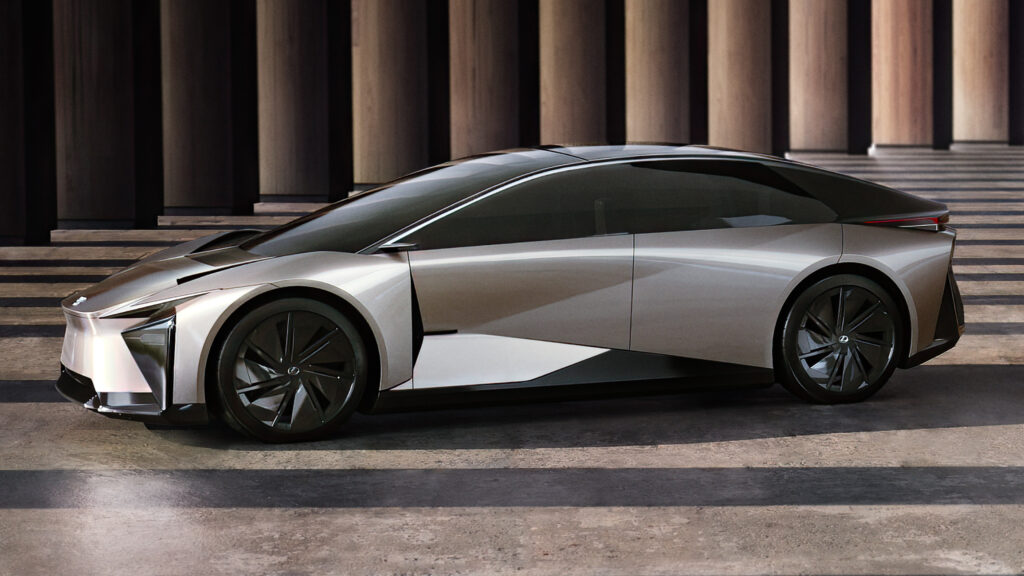Lexus says that the LF-CZ will have twice the range of traditional BEVs and autonomously drive itself down the assembly line
4 hours ago
 –>
–> 
–>
Lexus has sent heads spinning at the Japan Mobility Show in Tokyo with the unveiling of its striking LF-ZC Concept, a next-generation BEV previewing a production model that will be launched in 2026.
The LF-ZC, which stands for Lexus Future Zero-Emission Catalyst, is underpinned by a new EV architecture and features a modular structure formed through gigacasting, splitting the body into three key parts; the front, center, and rear. Gigacasting is being pursued by other car manufacturers, most notably Tesla, and Lexus says that its configuration will allow the front and rear of the LF-ZC to be structurally independent, enabling the rapid integration of new and improved batteries.
Key to making the LF-ZC a reality will be a state-of-the-art self-driving assembly line where the car will autonomously drive itself with just the battery, motor, tires, and wireless terminal components, eliminating the need for conveyor belts on the production line. Meanwhile, the car will launch with batteries that have a prismatic structure that Lexus says will boost range and reduce weight. In fact, Lexus says the LF-ZC aims to achieve approximately twice the range of conventional battery-electric vehicles.
advertisement scroll to continue
The LF-ZC has a similar footprint with the BMW i4 and Tesla Model 3, measuring 4,750 mm (187 inches) long, 1,880 mm (74 inches) wide, and standing 1,390 mm (54.7 inches) tall with a 2,890 mm (113.7-inch) wheelbase. Lexus is targeting a drag coefficient of less than 0.2 which, if achieved, would make it one of the slipperiest production vehicles ever.
Its shape is a cross between a sporty sedan and an estate, somewhat similar to the Kia EV6 albeit sitting much lower to the ground and void of any traditional crossover attributes. It follows a ‘Provocative Simplicity’ design theme coined by Lexus which represents an evolution of the firm’s current styling language.
Read: The Lexus Electrified Sport Concept Embodies The Spirit Of The LFA In The EV Age
Lexus has not yet provided technical specifications for the concept car’s electric powertrain but notes that it has the firm’s Direct4 all-wheel drive system and a similar steer-by-wire system to the Lexus RZ. It is promising to deliver “engaging and exhilarating dynamics where driver and car become one.” Sounds good to us.
The interior of the LF-CZ is expansive, to say the least. Those up-front sit low and far forward on the flat floor and a full panoramic roof adds to the luxurious feel. A futuristic yoke-style steering wheel is featured and sitting to the left of it is a small digital pad housing the shifter, the autonomous driving modes, and the drive modes. A screen to the right of the wheel is then used for music and climate controls while a digital instrument cluster is also used. This area of the interior is very similar to the Toyota FT-Se concept also presented in Tokyo. Positioned in front of the passenger is a large touchscreen display with entertainment functions.
An advanced voice recognition system has also been developed for the car using AI technology known as ‘Butler.’ This system uses self-learning functions for software customization and works in conjunction with the new Arene OS to tailor various car functions and characteristics to the driver. Much of the concept’s cabin is made from bamboo because of its fast growth, significant CO2 absorption capacity, and centuries-old use in Japan.

 –>
–> 
